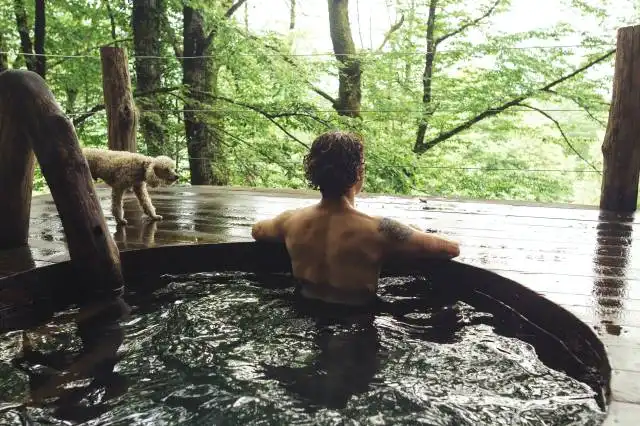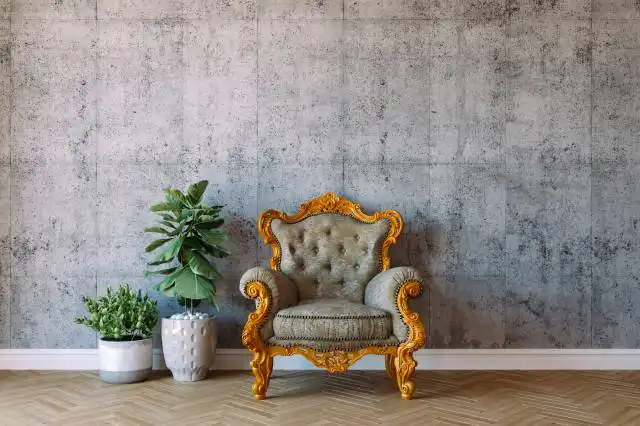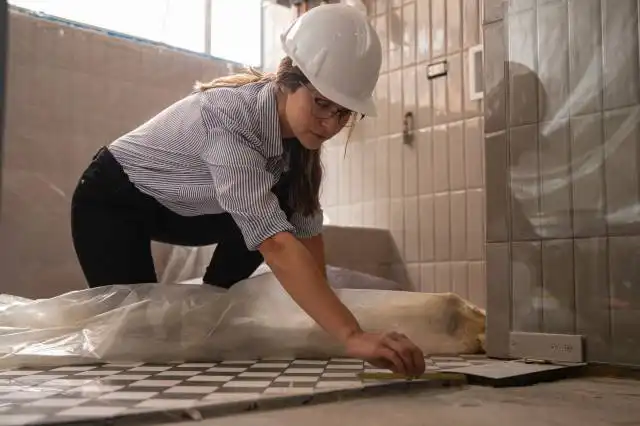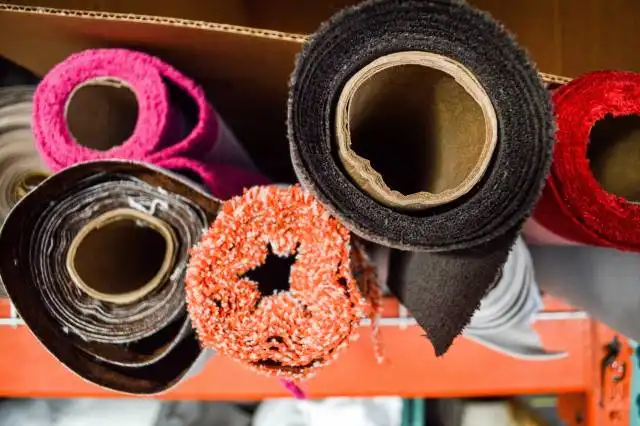Start a Furniture Upcycling Business
Breathing New Life into Old Furniture: The Golden Opportunity in Upcycling
| Updated


FURNITURE UPCYCLING BUSINESS
The phrase "one man's trash is another man's treasure" couldn't be more fitting for a Furniture Upcycling Business. Imagine giving forgotten furniture pieces a second lease of life while turning a profit – sounds quite appealing, doesn't it? This business model revolves around sourcing old, discarded furniture, restoring or reinventing them with artistic flair, and then selling the 'new' products to discerning customers who value unique, eco-friendly home decor. As more and more consumers lean into sustainable living, this could be your golden ticket into the entrepreneurial world.
Jump to Business Plan
RELATED BUSINESS IDEAS
Browse ALL Home Improvement & Repair Solutions Business Ideas
Discover Your Perfect Domain
Unlock the door to your online success with our hand-picked selection of premium domain names. Whether you're starting a new venture or rebranding an existing one, the right domain can set the tone for your digital presence. Browse through our curated list, each with its unique potential to enhance your brand's visibility and credibility.
FURNITURE UPCYCLING MINI BUSINESS PLAN
This a quick reality check to help you identify the strengths and weaknesses of your business concept before you dive in.
Furniture Upcycling Business
Expected Percent Margin:
- Gross Margin: 60-80%
- Net Profit Margin: 15-30%
Earnings Expectations:
- Daily Earnings: $100 - $300
- Weekly Earnings: $700 - $2,100
- Monthly Earnings: $3,000 - $9,000
- Annual Earnings: $36,000 - $108,000
Actions to Achieve these Numbers:
Inventory Acquisition:
- Finding Furniture: Visit garage sales, flea markets, or online marketplaces for cheap, second-hand furniture.
- Investment: Initial spending could be somewhere around $5,000-$10,000.
Upcycling, Renovation, and Design:
- Tools & Materials: Invest approx $1,000 in high-quality tools and restoration materials.
- DIY Restoration: Hone your furniture restoration and design skills to save on labor cost.
Marketing and Customer Acquisition:
- Website & Social Media: Create eye-catching before and after photos, post frequently on platforms like Instagram, Facebook and Pinterest.
- Word of Mouth: Encourage satisfied customers to refer friends.
Sales:
- Online Marketplaces: Use platforms like Etsy, eBay, and Facebook Marketplace.
- Pop-Up Shops: Participate in local events, fairs, or markets.
Cost Control:
- Home-Based Studio: Start with a home-based workshop to save on rent.
- Efficient Use of Materials: Try to get the maximum use out of your restoration materials to keep costs low.
Business Operations:
- Work Hours: Depending on the project complexity, the daily working hours may vary. However, aim to complete at least 1-3 pieces a week.
- Price: Aim for a selling price that's 2-3 times your total cost (acquisition + restoration).
Again, these are approximate estimations, and actual figures may vary. Always get professional advice when planning your business finances.
NOT WHAT YOU HAD IN MIND? Here are more ideas



Browse ALL Home Improvement & Repair Solutions Business Ideas
Grab Your Business Website Name
Before you get caught up in the whirlwind of setting up your business, invest in a domain name. It's a small but significant step that lays the foundation for your brand and makes it easier for customers to find and trust you. Just like you wouldn't build a house without securing the land first, don't build a business without securing your domain name.
"Why? Can't that wait?" Here's why it shouldn't
Step 1: Determine if a Furniture Upcycling Business is Right for You
Breakdown of Startup Expenses
Before starting a furniture upcycling business, it is important to understand the startup costs associated with the venture. These costs can include the purchase of tools, materials, and supplies, as well as any licenses or permits that may be required. Additionally, the cost of renting or leasing a workspace should be taken into consideration. It is also important to factor in the cost of marketing and advertising, as well as any fees associated with setting up a website or online store.
Breakdown of Ongoing Expenses
Once the business is up and running, there are ongoing expenses that must be taken into account. These can include the cost of materials, supplies, and tools, as well as any fees associated with maintaining a website or online store. Additionally, the cost of marketing and advertising must be factored in, as well as any fees associated with licenses or permits. Finally, the cost of rent or lease payments for a workspace should also be taken into consideration.
Examples of Ways to Make Money
There are a variety of ways to make money with a furniture upcycling business. One way is to sell the finished pieces directly to customers. This can be done through an online store, at a local market, or through a brick-and-mortar shop. Another way to make money is to offer furniture upcycling services to customers. This can include refinishing, painting, and reupholstering furniture. Finally, furniture upcyclers can also offer classes and workshops to teach others how to upcycle furniture.
Step 2: Name the Business
When naming the business, it is important to choose a name that will be memorable and easy to pronounce. It should also be something that reflects the mission of the business. Additionally, it should be unique and not too similar to other businesses in the area. It is also important to make sure the name is available to register as a business name and to check if the domain name is available.
Once the name has been chosen, it is important to register the business name with the local government and to register the domain name. This will help to protect the business name and ensure that it is not used by another business. Additionally, registering the business name will help to ensure that the business is legally compliant.
It is also important to consider how the business name will appear on business cards, websites, and other marketing materials. This will help to create a consistent brand image and will help to ensure that the business name is recognizable. Additionally, it is important to consider trademarking the business name to protect it from being used by other businesses.
Finally, it is important to consider how the business name will appear in search engine results. This will help to ensure that potential customers can easily find the business online. Additionally, it is important to consider how the business name will appear in social media profiles and other online platforms. This will help to ensure that the business is easily recognizable and that potential customers can easily find the business.
Step 3: Create a Business Plan
Creating a business plan is an important step in the process of starting a furniture upcycling business. The business plan should include a description of the business, a market analysis, a description of the products and services offered, a marketing plan, an operational plan, a financial plan, and a management plan.
The description of the business should include the business’s mission statement, the goals and objectives of the business, and the legal structure of the business. The market analysis should include an analysis of the target market, the competition, and the current trends in the industry. The description of the products and services should include a description of the types of furniture that will be upcycled, the pricing of the furniture, and the methods of delivery.
The marketing plan should include the methods used to promote the business, such as advertising, public relations, and social media. The operational plan should include the location of the business, the hours of operation, and the staffing plan. The financial plan should include the startup costs, the ongoing expenses, and the sources of funding. The management plan should include the roles and responsibilities of the management team and the organizational structure of the business.
Step 4: Obtain the Necessary Licenses and Permits
When starting a furniture upcycling business, it is important to obtain the necessary licenses and permits. Depending on the state, the necessary licenses and permits may vary. Generally, businesses will need to obtain a business license, a sales tax license, and a zoning permit. Depending on the type of business, additional permits may be required. For example, if the business will be selling furniture, a seller’s permit may be required. Additionally, if the business will be selling furniture online, a Federal Tax Identification Number (TIN) may be necessary. It is important to research the local laws and regulations to determine what licenses and permits are necessary.
How to Obtain Licenses and Permits
Once the necessary licenses and permits have been identified, the next step is to obtain them. This can be done by visiting the local government office or website. Generally, the application process is straightforward and requires basic information such as the business name, address, and contact information. Additionally, the business owner may need to provide proof of identity and proof of address. Once the application is submitted, the business owner may need to wait for the application to be processed and approved. It is important to research the local laws and regulations to determine the timeline for obtaining licenses and permits.
Cost of Licenses and Permits
The cost of licenses and permits will vary depending on the state and the type of business. Generally, the cost of licenses and permits is minimal and can range from a few dollars to a few hundred dollars. Additionally, some states may require the business owner to pay an annual fee to maintain the license or permit. It is important to research the local laws and regulations to determine the cost of licenses and permits.
Step 5: Find a Location
When it comes to finding the right location for a furniture upcycling business, there are a few things to consider. First, the location should be easily accessible for customers. The business should also be located in an area with plenty of foot traffic, as this will help draw in customers. Additionally, the area should have a good mix of residential and commercial businesses, as this will help to create a steady stream of potential customers. Finally, the area should also have a good selection of furniture stores, as this will provide a great source of materials for upcycling projects.
Obtaining the Necessary Permits
Once the location has been determined, the next step is to obtain the necessary permits and licenses. This will vary depending on the city and state, but typically will include a business license, a zoning permit, and a health permit. Additionally, there may be other permits and licenses that need to be obtained, such as a fire safety permit or a liquor license if the business will be serving alcohol. It is important to research the local laws and regulations to ensure that all necessary permits and licenses are obtained.
Securing the Space
Once all of the necessary permits and licenses have been obtained, the next step is to secure the space. This can be done by signing a lease or purchasing the property outright. It is important to research the area and compare prices to ensure that the best deal is obtained. Additionally, it is important to consider the length of the lease and the terms of the agreement to ensure that the business is not locked into a long-term commitment that may not be beneficial in the long run.
Preparing the Space
Once the space has been secured, the next step is to prepare the space for the business. This will involve cleaning and painting the walls, installing any necessary fixtures, and setting up the furniture. Additionally, any necessary electrical and plumbing work should be completed before the business can open. Finally, any signage or branding should also be completed before the business can open to ensure that customers can easily identify the business.
Step 6: Source Supplies
Finding the right supplies for your furniture upcycling business is essential. You’ll need to find a reliable source of furniture pieces, as well as the tools, paints, and other materials you’ll need to upcycle them. Start by checking out local thrift stores, garage sales, and flea markets for furniture pieces. You can also check out online marketplaces, such as Craigslist and eBay, for furniture pieces. Additionally, you can contact local furniture stores and ask if they have any pieces they’d be willing to part with.
For tools and materials, you can check out your local hardware store. You can also check out online stores, such as Amazon and Etsy, for tools and materials. Additionally, you can contact local furniture stores and ask if they have any tools or materials they’d be willing to part with.
When sourcing supplies, it’s important to consider the cost and quality of the items. You don’t want to spend too much money on supplies, but you also want to make sure you’re getting quality items that will last. Additionally, you should consider the availability of the items. You want to make sure you can get the supplies you need when you need them.
Finally, it’s important to consider the environmental impact of your sourcing decisions. Whenever possible, try to source supplies that are eco-friendly and sustainable. This will help you reduce your environmental impact and make your business more sustainable.
Step 7: Market Your Business
When it comes to marketing your furniture upcycling business, the best way to start is by creating a website and social media accounts. This will allow potential customers to find you and learn more about what you do. Additionally, you can create flyers and post them around your local area, or even create a blog to showcase your work. You can also reach out to local businesses and offer to upcycle their furniture for them. Finally, you can reach out to local media outlets and offer to do interviews or write articles about your business.
Tips for Effective Marketing
When it comes to marketing your business, it is important to create a consistent message and brand. You should create a logo and a tagline that will help customers remember your business. Additionally, you should create content that is interesting and engaging, as this will help to draw customers in. You should also focus on creating relationships with customers, as this will help to build trust and loyalty. Finally, you should always be open to feedback and suggestions from customers, as this will help you to improve your services.
Step 8: Set Up an Online Presence
Setting up an online presence is an important step in starting a furniture upcycling business. An online presence can help you reach a larger audience and make it easier for customers to find and purchase your products. To set up an online presence, you'll need to create a website and social media accounts. You'll also need to create a logo and branding for your business.
When creating a website, make sure to include a portfolio of your work, contact information, and a blog where you can share your tips and tricks. You can also use your website to showcase your products and services, and to provide customers with information about your business.
When creating social media accounts, make sure to choose the platforms that are most relevant to your business. For example, if you are selling furniture, you may want to focus on platforms like Pinterest and Instagram. You can use these platforms to showcase your products and services, and to engage with potential customers.
When creating a logo and branding for your business, make sure to choose a design that reflects your business and resonates with your target audience. You can also use your logo and branding to create a consistent look and feel across all of your online platforms.
Finally, make sure to optimize your online presence for search engine optimization (SEO). This will help potential customers find your business more easily. You can do this by including relevant keywords in your website content, and by creating backlinks to your website from other websites.
Step 9: Keep Track of Finances
Keeping track of finances is an important part of running a successful business. It is important to keep track of all income and expenses, as well as any taxes that need to be paid. It is also important to set up a budget and stick to it. There are many tools available to help with this, such as accounting software, spreadsheets, and budgeting apps. It is also important to set up a system for tracking customer payments and invoices. This will help ensure that all payments are received and that all expenses are accounted for.
Setting Up a Business Bank Account
Setting up a business bank account is a great way to keep track of finances. This will allow for easy tracking of income and expenses, as well as providing a secure place to store funds. It is also important to make sure that the bank account is set up correctly and that all of the necessary paperwork is filed. This will help to ensure that all taxes are paid on time and that all funds are properly accounted for.
Hiring an Accountant
Hiring an accountant is another great way to keep track of finances. An accountant can help to ensure that all taxes are paid on time and that all expenses are accounted for. They can also provide advice on how to best manage finances and provide guidance on setting up a budget. An accountant can also help to ensure that all financial records are kept up to date and accurate.
Utilizing Financial Software
Utilizing financial software is another great way to keep track of finances. There are many different types of software available, such as accounting software, budgeting software, and invoicing software. This type of software can help to automate many of the tasks associated with keeping track of finances, such as tracking income and expenses, creating invoices, and tracking customer payments. This can help to save time and ensure that all financial records are accurate and up to date.
EXPLORE MORE CATEGORIES
Browse ALL Business Idea Categories
TAKE THE NEXT STEPS









